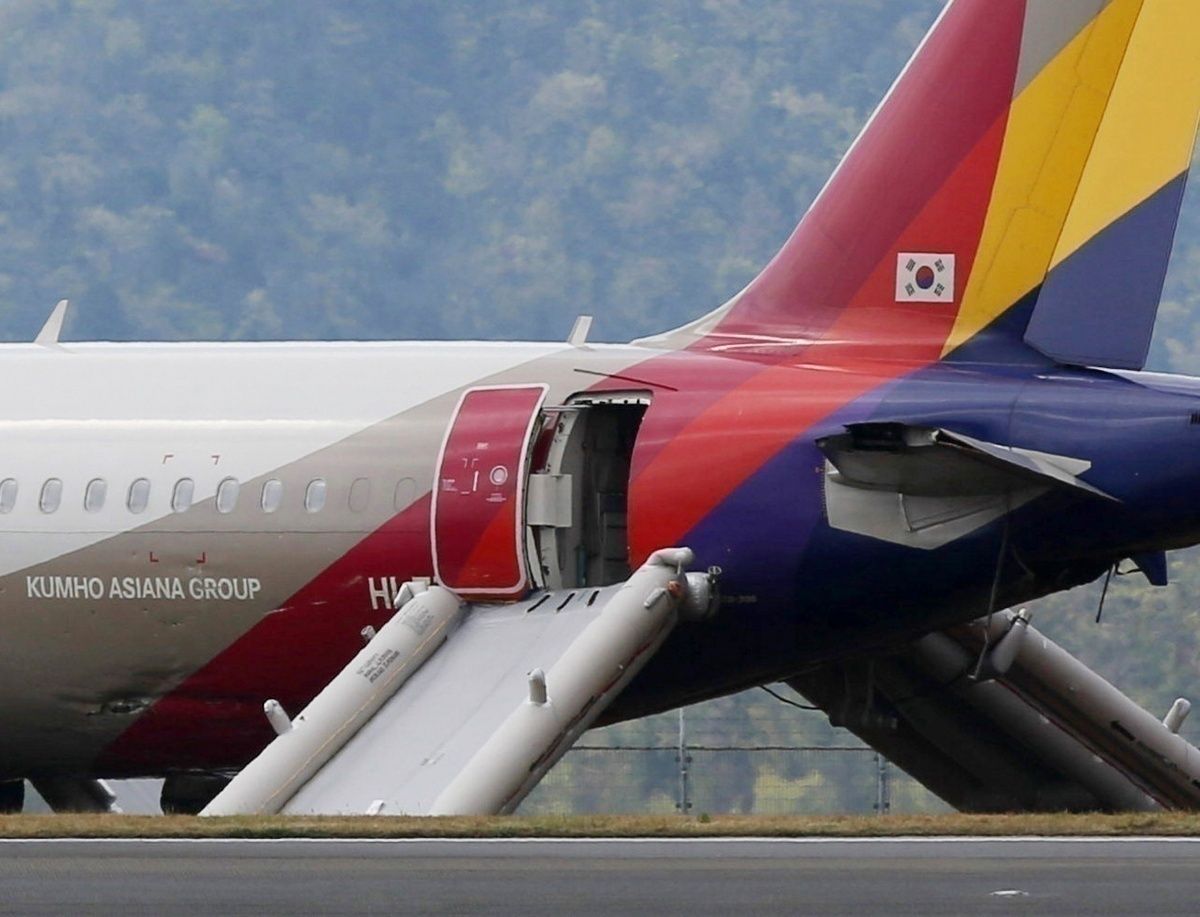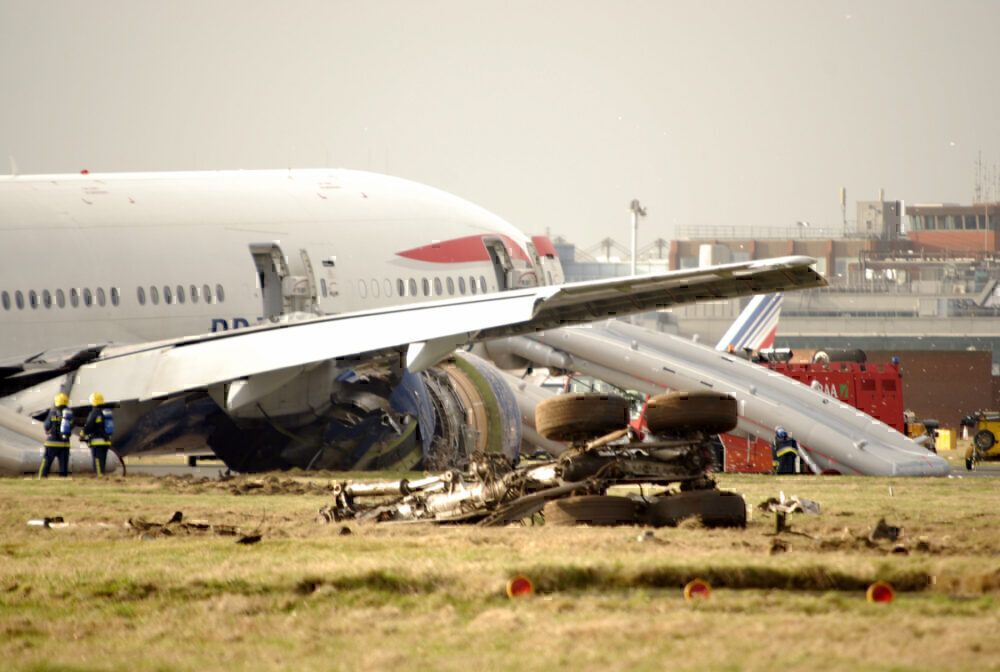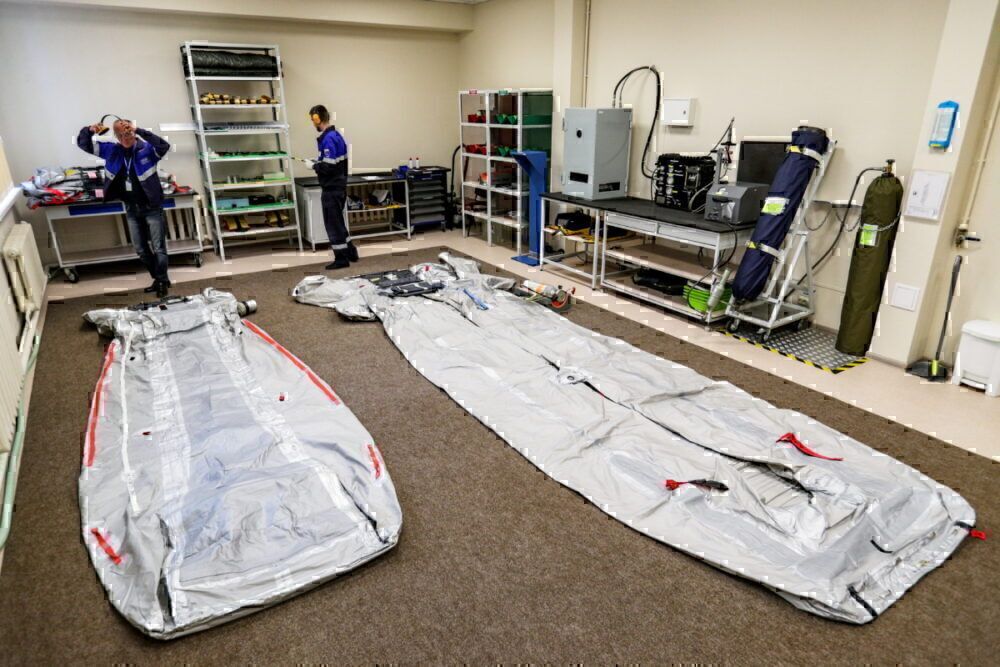Aircraft slides are used as a quick way to escape a plane should an emergency arise and can inflate in just six seconds! We've all seen the safety cards and demonstrations on how to use an evacuation slide on an aircraft should the need arise. However, have you ever wondered how they work? Let's take a closer look.
How do slides work?
The Federal Aviation Administration requires that an aircraft can be evacuated within 90 seconds, in the dark, with half the exits blocked. Altogether, to meet this requirement, planes are fitted with evacuation slides to help get passengers safely off the plane should the need arise.
Each slide is uniquely designed for its location onboard an aircraft model. It must be light and compact so that is can be stored either inside an aircraft door, below the door sill, or by the emergency exit windows. A lever on the interior door links the slide to a door. When the aircraft is in flight, this lever is in the 'armed' mode, and if the door is opened, then the slide will deploy.
As the door opens, it pulls the slide out of its container. The slide then drops into position and begins to inflate. Compressed gas is used to inflate the slide initially but only provides about one-third of the gas needed to inflate the slide fully. The rest comes from ambient air, which is channeled into the slide through aspirators.
When the inflation mechanism is initially triggered, the gas from the canister moves through the aspirators at high speed and creates a vacuum. Ambient air is sucked into the aspirators through louvers, which close once the slide is fully inflated.
British Airways released a great video that demonstrates how this works.
Accidental deployment
Sometimes accidents happen, and the slides are deployed when they aren't needed. Full or partial deployment of these slides is an expensive and dangerous business. The International Air Transport Association (IATA) states that unintentional slide deployment costs the airline industry over $20 billion each year. It can result in severe injuries and, in some instances, can be fatal.
An accidental deployment of an evacuation slide can occur if the doors have not been correctly disarmed or if there is a malfunction. We've all heard the command for the flight attendants to 'disarm doors and cross-check' or to 'prepare the doors for departure/arrival.' This command is asking flight attendants to check that the doors have been correctly disarmed to prevent the slides from being released and inflating when the doors are opened.
Several incidents of slides accidentally deploying have been reported, and can cause considerable delays. Although this can be an inconvenience, it is not nearly as concerning as a case reported in Milton, US last year, where an evacuation slide fell out of the sky and landed in someone's back yard.
Interesting facts
The first evacuation slide was invented by James F. Boyle, who submitted a patent for it in 1954. The first slide was manufactured by Air cruisers. This company is now known as Zodiac Aero Evacuation Systems. It continues to produce inflatable aircraft evacuation slides today.
In the 1960s, slides had to be capable of inflating in 25 seconds in non-extreme weather. Today, the slides must be capable of inflating within six seconds. They must also be built to function in temperatures ranging from -65 to 160 degrees Fahrenheit. Additionally, they must be able to fall into position in winds up to 25 knots (28.7 mph).
Moreover, most slides can double up as a raft if the emergency landing happens over water.
Altogether, have you had to use an evacuation slide? Let us know in the comments.



